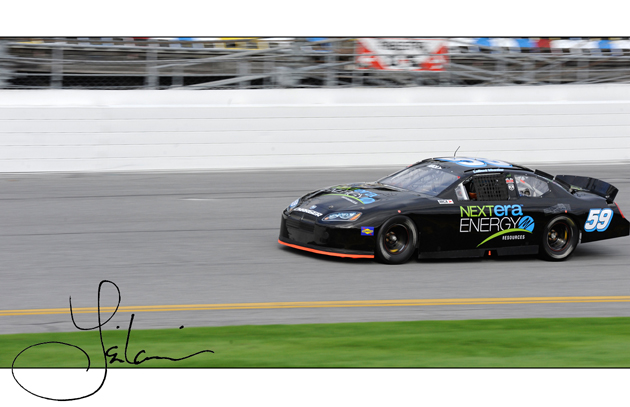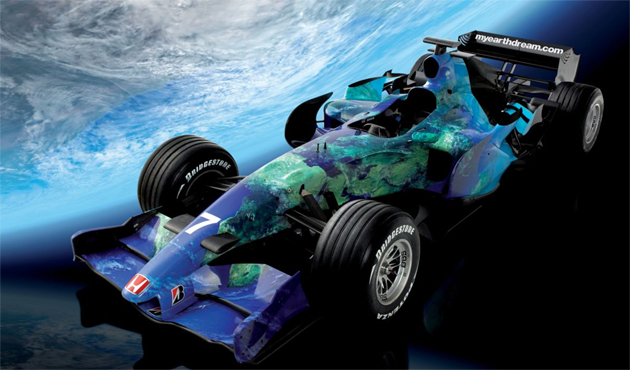 Humans are competitive creatures who have raced against each other in one form or another for millennia. The practice that likely evolved from hunting and the struggle to survive has adapted to advances in technology over time, moving from foot races to eventually involve vehicles such as chariots and boats until, at the end of the 19th century, the automobile was invented and a new era began. Since the first Competition for Horseless Carriages was held in 1894 – and officially won by Georges Lemaître in a Peugeot, pictured above – the activity has grown and diversified into a sport with thousands of events and many millions of fans.
Humans are competitive creatures who have raced against each other in one form or another for millennia. The practice that likely evolved from hunting and the struggle to survive has adapted to advances in technology over time, moving from foot races to eventually involve vehicles such as chariots and boats until, at the end of the 19th century, the automobile was invented and a new era began. Since the first Competition for Horseless Carriages was held in 1894 – and officially won by Georges Lemaître in a Peugeot, pictured above – the activity has grown and diversified into a sport with thousands of events and many millions of fans.
With the increasing awareness of the damage done to health and habitat by the burning of fossil fuels, the question arises, "Can racing ever really be green?" The answer, we think, is "yes." It may take a while and a lot of fuel may be burned in the meantime, but racing is an ever-evolving enterprise oriented towards exploring and exploiting gains in efficiency. Therefore, it is sure to at least have some side benefits to green motoring. In fact, there is an effort being made by many today to speed up the greening process since, although it may only account for a proportionately small amount of emissions produced on the planet, racing can not only help drive the technology that may one day move us all, it can also help speed societal acceptance. Hit the jump as we take a look at some of those endeavors.

The most popular racing series in America is run by the National Association for Stock Car Auto Racing and is better known by the acronym, NASCAR. Unfortunately, there is not much in the way of environmental-friendliness to discuss when it comes to these stock cars, where the series' most recent significant green innovation involved discontinuing the use of unleaded gasoline in 2006. To their credit though, they did install a very nice solar array at Pocono Speedway last year and they have created a "director of green innovation" position for the series. Perhaps he'll consider the approach taken by current ARCA series contender Leilani Münter (above) and at least buy carbon offsets for the thousands of gallons burned every race.

It could be argued that the apparent lack of innovation and environmental concern in NASCAR contrasts somewhat with the efforts and appearances made by the series of most international repute, Formula One. Indeed, the rules have allowed teams to innovate and, as actual automakers have participated over the years, the case is often made that some of these technological advances find their way into passenger vehicles. The same year NASCAR decided to get the lead out of their fuel, the now former president of the Fédération Internationale de l'Automobile (FIA), Max Mosely, announced he wanted the series to take the lead in developing "green" technology. While there has been talk of incorporating biofuels and limiting revs, the introduction of kinetic energy recovery systems (KERS) has had the highest green-tech profile. Although some have had success with the regenerative braking system, the teams have voted to ban it for 2010. This is not to say F1 will abandon the pursuit of environmentally-friendlier machines, as the newly-elected president Jean Todt has re-iterated the FIA's green stance.

Happily, racing is not restricted to fuel-powered machines and, just as electric vehicles (EVs) are generating a lot of buzz at auto shows, there is also burgeoning interest in seeing them compete on the track. Because of the nature of the battery-powered beasts, they have been doing most of their racing a quarter-mile at a time on drag-strips. Acting as an organizing and record-keeping body for this activity since 1997, the National Electric Drag Racing Association (NEDRA) sanctions events around the country and helps introduce race fans to electric sprinters like the White Zombie of John "Plasma Boy" Wayland (above) and the indomitable Killacycle.
The video meant to be presented here is no longer available. Sorry for the inconvenience.
While EVs do have their weaknesses, drag racing tends to play to their strengths. The heavy batteries, which might wreak havoc with handling on a road course, can act as traction-giving ballast when strategically placed over the rear wheels. Another consideration is the running cost. While buying a Tesla Roadster might set you back a pretty penny, racing one down the strip is cheap compared to expenditures required by traditional internal combustion machines. While the differences in disbursements made for fuel are obvious, less so are those made for maintenance. A high performance engine can only give so many optimal runs before needing a thorough going-over and the smallest breakdown in one of hundreds of parts can lead to thousands of dollars in repairs. On the other hand, a AC motor-powered electric has little to worry about, leaving the driver to focus on things like launching and hanging on.
The video meant to be presented here is no longer available. Sorry for the inconvenience.
With the advent of lithium batteries, drag strips are no longer the only venue for carbon-free competition though. Electric motorcycles garnered a lot of attention last year with the TTXGP on the Isle of Man being seen as something of a paradigm shifting event and the Eco Enduro shining a light on the off-road possibilities. Road-racing on four wheels should also get a boost this summer with the seminal EMXGP expected to put production electrics onto the streets of Paris and the EV Cup planning events around Europe in 2011. It all makes watching the development of projects such as the Westfield iRacer, Greenstage GS750V, and Green GT that much more exciting and leads us to wonder how long it will be before the likes of NASCAR and Formula One go green for real.
The video meant to be presented here is no longer available. Sorry for the inconvenience.


Sign in to post
Please sign in to leave a comment.
Continue